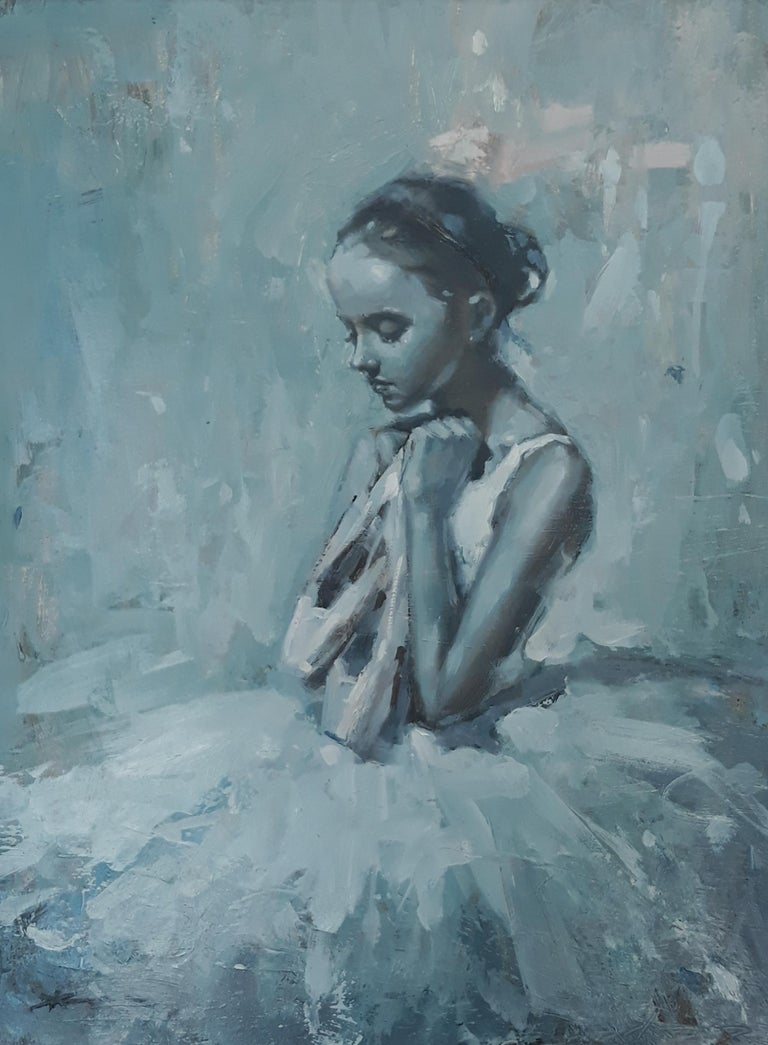Why Figurative Oil Painting Remains a Classic Option for Artists
Why Figurative Oil Painting Remains a Classic Option for Artists
Blog Article
A Trip Through the Globe of Figurative Oil Paint: Finding the Distinct Characteristics and Psychological Depth of the Tool

History of Figurative Oil Painting
Emerging throughout the late Middle Ages and flourishing throughout the Renaissance, figurative oil painting has a rich history that mirrors both creative innovation and social evolution. Oil paints were utilized in Europe as a way to enhance the luminance and depth of color in art work. Artists such as Jan van Eyck originated the medium, demonstrating its potential to record detailed details and textures, thus permitting an extra realistic depiction of the human kind.
As the Renaissance progressed, prominent figures like Leonardo da Vinci and Michelangelo broadened the limits of figurative oil paint. They emphasized physiological precision and point of view, creating works that shared feeling and narrative depth. The medium's versatility allowed for trial and error with light and darkness, bring about the development of chiaroscuro techniques that additionally improved the aesthetic experience.
Unique Attributes of the Tool
The development of figurative oil painting has been dramatically influenced by the one-of-a-kind qualities of the medium itself. Oil paint, composed of pigments put on hold in oil, uses musicians a remarkable convenience that enables a wide variety of surfaces and appearances. Its slow drying out time enables thorough mixing and layering, which can develop deepness and brightness unattainable in other tools.
In addition, oil paint's abundant pigmentation supplies vibrant shades that maintain their intensity gradually. This particular is critical in metaphorical painting, where capturing the nuances of complexion and psychological expressions is vital. The capability to achieve soft changes and refined gradients improves the realistic quality of topics, permitting musicians to communicate complex psychological states.
In addition, oil paint adheres well to different surfaces, such as canvas, timber, and metal, expanding the extent of imaginative expression. The medium's versatility sustains various methods, from comprehensive realistic look to expressive brushwork, making it possible for musicians to explore their individual styles.
Ultimately, the distinct buildings of oil paint not only enhance the aesthetic experience yet also encourage artists to interact extensive stories, making figurative oil painting a deeply expressive art type.
Designs and techniques Employed
Within the world of metaphorical oil paint, musicians utilize a varied range of strategies and designs that add to the deepness and splendor of their job. One popular strategy is glazing, where transparent layers of paint are applied over dried layers, allowing light to pass through and show, boosting luminance and deepness. This approach is often used to attain a sense of realistic look and complexity in skin tones.
One more strategy is impasto, where thick layers of paint are used with a palette blade or brush, producing a textured surface that adds a three-dimensional top quality to the painting. This design can stimulate a natural continue reading this action, attracting the YOURURL.com visitor in with its tactile nature.
Musicians likewise check out different brushwork designs, from penalty, comprehensive strokes that capture elaborate features to wider, much more meaningful strokes that convey activity and emotion (figurative oil painting). The option of color palette dramatically influences the total mood of a piece, with cozy tones frequently presenting feelings of convenience and cool tones recommending melancholy
Additionally, the combination of chiaroscuro, the contrast in between light and shadow, enables artists to create remarkable impacts that boost the narrative top quality of their job. Each technique and design is very carefully chosen to raise the visitor's experience and understanding.
Psychological Deepness in Figurative Art
Emotional depth acts as a foundation in metaphorical art, allowing artists to go beyond mere depiction and engage audiences on an extensive degree. This emotional vibration is frequently accomplished via the nuanced portrayal of human numbers, expressions, and interactions. Artists harness the power of darkness, color, and light to evoke feelings that resonate deeply with the audience, producing a visceral link to the subject matter.
In figurative oil painting, the complex layering of paint can mirror the complexities of human feeling. The choice of combination, whether cozy or awesome, plays an important duty in setting the mood and ambience of a piece. For example, softer hues might stimulate peace and introspection, while strong, different colors can communicate stress and dramatization.

Influential Artists and Their Functions
Countless prominent musicians have dramatically shaped the landscape of metaphorical oil painting, anchor each adding unique perspectives and techniques that remain to influence modern creators. Amongst these artists, Lucian Freud stands apart for his extreme mental depth and raw representation of the human kind, often obscuring the lines in between beauty and degeneration. Freud's works, identified by thick, impasto brushstrokes, welcome viewers to face the intricacies of identity and vulnerability.

Likewise, Andrew Wyeth's meticulous realism in items like "Christina's Globe" captures profound stories within apparently straightforward structures. His use light and darkness stimulates a sense of fond memories and psychological resonance, drawing visitors right into the intimate worlds he represents.
In the world of contemporary art, Kehinde Wiley has gained acknowledgment for his dynamic, larger-than-life pictures that challenge traditional notions of representation. By placing individuals of color in contexts evocative timeless portrait, Wiley's work redefines the canon of art history.
These artists, together with others, have not just enriched metaphorical oil paint yet have also expanded the discussion bordering society, feeling, and identity, making sure that the tool stays an important form of expression in the art globe. figurative oil painting.
Conclusion
To conclude, metaphorical oil paint stays a powerful medium that encapsulates the complexities of human emotion with its abundant coloring and flexible methods. The historic evolution of this art form, incorporated with its distinct features, enables extensive imaginative expression. Strategies such as glazing and impasto enhance the psychological resonance of each item, while the payments of prominent musicians proceed to inspire and form the discussion surrounding this ageless genre. The journey with figurative oil paint discloses its enduring relevance in the art world.
The expedition of figurative oil painting provides a profound understanding into the interplay of strategy, feeling, and historic context that specifies this venerable tool. Oil paint, composed of pigments put on hold in oil, uses artists an amazing adaptability that allows for a broad variety of textures and finishes.Within the realm of figurative oil painting, artists use a diverse selection of strategies and designs that add to the deepness and splendor of their work.Various influential artists have actually dramatically shaped the landscape of figurative oil paint, each adding one-of-a-kind perspectives and methods that proceed to inspire contemporary makers.In final thought, figurative oil painting continues to be a powerful medium that envelops the intricacies of human emotion with its rich coloring and flexible techniques.
Report this page